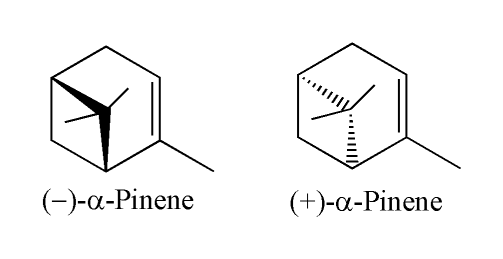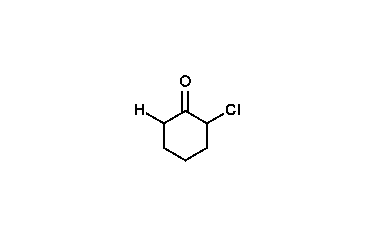|
Favorskii Rearrangement
The Favorskii rearrangement is principally a rearrangement of cyclopropanones and α-halo ketones that leads to carboxylic acid derivatives. In the case of cyclic α-halo ketones, the Favorskii rearrangement constitutes a ring contraction. This rearrangement takes place in the presence of a base, sometimes hydroxide, to yield a carboxylic acid, but usually either an alkoxide base or an amine to yield an ester or an amide, respectively. α,α'-Dihaloketones eliminate HX under the reaction conditions to give α,β-unsaturated carbonyl compounds. Note that trihalomethyl ketone substrates will result in haloform and carboxylate formation via the haloform reaction instead. History The reaction is named for the Russian chemist Alexei Yevgrafovich Favorskii. Reaction mechanism The reaction mechanism is thought to involve the formation of an enolate on the side of the ketone away from the chlorine atom. This enolate cyclizes to a cyclopropanone intermediate which is then attacked by t ... [...More Info...] [...Related Items...] OR: [Wikipedia] [Google] [Baidu] |
Otto Wallach
Otto Wallach (; 27 March 1847 – 26 February 1931) was a German chemist and recipient of the 1910 Nobel Prize in Chemistry for his work on alicyclic compounds. Biography Wallach was born in Königsberg, the son of a Prussian civil servant. His father, Gerhard Wallach, descended from a Jewish family that had converted to Lutheranism. His mother, Otillie (Thoma), was an ethnic German of Protestant religion. Wallach's father was transferred to Stettin (Szczecin) and later to Potsdam. Otto Wallach went to school, a ''Gymnasium'', in Potsdam, where he learned about literature and the history of art, two subjects he was interested his whole life. At this time he also started private chemical experiments at the house of his parents. In 1867 he started studying chemistry at the University of Göttingen, where at this time Friedrich Wöhler was head of organic chemistry. After one semester at the University of Berlin with August Wilhelm von Hofmann, Wallach received his Doctoral degree ... [...More Info...] [...Related Items...] OR: [Wikipedia] [Google] [Baidu] |
Alexei Yevgrafovich Favorskii
Alexey Yevgrafovich Favorsky (; – 8 August 1945), was a Russian and Soviet chemist and recipient of the USSR State Prize, Stalin Prize (1941) and the title Hero of Socialist Labour (1945). Life Favorsky studied chemistry at the imperial Saint Petersburg State University from 1878 to 1882. He joined Alexander Butlerov's laboratory for several years, and in 1891 became a lecturer. In 1895, Favorksy received his PhD and became professor for technical chemistry. His discovery of the Favorskii rearrangement in 1894 and the Favorskii reaction between 1900 and 1905 are connected to his name. He worked at the new organics department from 1897, and served as its director from 1934 to 1937. For his improvement of the production of synthetic rubber, Favorsky was awarded the USSR State Prize, Stalin Prize in 1941. The artist Vladimir Favorsky was his nephew. Favorsky died in 1945 and was buried at the Volkovskoye Orthodox cemetery. References Further readingBiography (St. Petersburg ... [...More Info...] [...Related Items...] OR: [Wikipedia] [Google] [Baidu] |
Electrocyclic Reaction
In organic chemistry, an electrocyclic reaction is a type of pericyclic reaction, pericyclic, rearrangement reaction, rearrangement reaction where the net result is one pi bond being converted into one sigma bond or vice versa. These reactions are usually categorized by the following criteria: * Reactions can be either photochemistry, photochemical or thermal. * Reactions can be either ring-opening or ring-closing (electrocyclization). * Depending on the type of reaction (Organic photochemistry, photochemical or thermal) and the number of pi electrons, the reaction can happen through either a conrotatory and disrotatory, conrotatory or disrotatory mechanism. * The type of rotation determines whether the cis–trans isomerism, cis or trans isomer of the product will be formed. Classical examples The Nazarov cyclization reaction is a named electrocyclic reaction converting divinylketones to cyclopentenones. A classic example is the thermal ring-opening reaction of 3,4-dimethylcyclo ... [...More Info...] [...Related Items...] OR: [Wikipedia] [Google] [Baidu] |
Adenosine Triphosphate
Adenosine triphosphate (ATP) is a nucleoside triphosphate that provides energy to drive and support many processes in living cell (biology), cells, such as muscle contraction, nerve impulse propagation, and chemical synthesis. Found in all known forms of life, it is often referred to as the "molecular unit of currency" for intracellular energy transfer. When consumed in a Metabolism, metabolic process, ATP converts either to adenosine diphosphate (ADP) or to adenosine monophosphate (AMP). Other processes regenerate ATP. It is also a Precursor (chemistry), precursor to DNA and RNA, and is used as a coenzyme. An average adult human processes around 50 kilograms (about 100 mole (unit), moles) daily. From the perspective of biochemistry, ATP is classified as a nucleoside triphosphate, which indicates that it consists of three components: a nitrogenous base (adenine), the sugar ribose, and the Polyphosphate, triphosphate. Structure ATP consists of three parts: a sugar, an amine base ... [...More Info...] [...Related Items...] OR: [Wikipedia] [Google] [Baidu] |
Phosphate
Phosphates are the naturally occurring form of the element phosphorus. In chemistry, a phosphate is an anion, salt, functional group or ester derived from a phosphoric acid. It most commonly means orthophosphate, a derivative of orthophosphoric acid, phosphoric acid . The phosphate or orthophosphate ion is derived from phosphoric acid by the removal of three protons . Removal of one proton gives the dihydrogen phosphate ion while removal of two protons gives the hydrogen phosphate ion . These names are also used for salts of those anions, such as ammonium dihydrogen phosphate and trisodium phosphate. File:3-phosphoric-acid-3D-balls.png, Phosphoricacid File:2-dihydrogenphosphate-3D-balls.png, Dihydrogenphosphate File:1-hydrogenphosphate-3D-balls.png, Hydrogenphosphate File:0-phosphate-3D-balls.png, Phosphate or orthophosphate In organic chemistry, phosphate or orthophosphate is an organophosphate, an ester of orthophosphoric acid of the form where one ... [...More Info...] [...Related Items...] OR: [Wikipedia] [Google] [Baidu] |
Photochemical Reaction
Organic photochemistry encompasses organic reactions that are induced by the action of light. The absorption of ultraviolet light by organic molecules often leads to reactions. In the earliest days, sunlight was employed, while in more modern times ultraviolet lamps are employed. Organic photochemistry has proven to be a very useful synthetic tool. Complex organic products can be obtained simply. History Early examples were often uncovered by the observation of precipitates or color changes from samples that were exposed to sunlights. The first reported case was by Ciamician that sunlight converted santonin to a yellow photoproduct: An early example of a precipitate was the photodimerization of anthracene, characterized by Yulii Fedorovich Fritzsche and confirmed by Elbs. Similar observations focused on the dimerization of cinnamic acid to truxillic acid. Many photodimers are now recognized, e.g. pyrimidine dimer, thiophosgene, diamantane. Another example was uncovered by ... [...More Info...] [...Related Items...] OR: [Wikipedia] [Google] [Baidu] |
Justus Liebigs Ann
Justus (died on 10 November between 627 and 631) was the fourth archbishop of Canterbury. Pope Gregory the Great sent Justus from Italy to England on a mission to Christianise the Anglo-Saxons from their native paganism; he probably arrived with the second group of missionaries despatched in 601. Justus became the first bishop of Rochester in 604 and signed a letter to the Irish bishops urging the native Celtic church to adopt the Roman method of calculating the date of Easter. He attended a church council in Paris in 614. Following the death of King Æthelberht of Kent in 616, Justus was forced to flee to Gaul but was reinstated in his diocese the following year. In 624, he was elevated to Archbishop of Canterbury, overseeing the despatch of missionaries to Northumbria. After his death, he was revered as a saint and had a shrine in St Augustine's Abbey, Canterbury, to which his remains were translated in the 1090s. Arrival in Britain Justus was a member of ... [...More Info...] [...Related Items...] OR: [Wikipedia] [Google] [Baidu] |
Decarboxylation
Decarboxylation is a chemical reaction that removes a carboxyl group and releases carbon dioxide (CO2). Usually, decarboxylation refers to a reaction of carboxylic acids, removing a carbon atom from a carbon chain. The reverse process, which is the first chemical step in photosynthesis, is called carboxylation, the addition of CO2 to a compound. Enzymes that catalyze decarboxylations are called decarboxylases or, the more formal term, carboxy-lyases (Enzyme Commission number, EC number 4.1.1). In organic chemistry The term "decarboxylation" usually means replacement of a carboxyl group () with a hydrogen atom: : Decarboxylation is one of the oldest known organic reactions. It is one of the processes assumed to accompany pyrolysis and destructive distillation. Overall, decarboxylation depends upon stability of the carbanion synthon , although the anion may not be a true chemical intermediate. Typically, carboxylic acids decarboxylate slowly, but carboxylic acids with an α el ... [...More Info...] [...Related Items...] OR: [Wikipedia] [Google] [Baidu] |
Favorskii Rearrangement
The Favorskii rearrangement is principally a rearrangement of cyclopropanones and α-halo ketones that leads to carboxylic acid derivatives. In the case of cyclic α-halo ketones, the Favorskii rearrangement constitutes a ring contraction. This rearrangement takes place in the presence of a base, sometimes hydroxide, to yield a carboxylic acid, but usually either an alkoxide base or an amine to yield an ester or an amide, respectively. α,α'-Dihaloketones eliminate HX under the reaction conditions to give α,β-unsaturated carbonyl compounds. Note that trihalomethyl ketone substrates will result in haloform and carboxylate formation via the haloform reaction instead. History The reaction is named for the Russian chemist Alexei Yevgrafovich Favorskii. Reaction mechanism The reaction mechanism is thought to involve the formation of an enolate on the side of the ketone away from the chlorine atom. This enolate cyclizes to a cyclopropanone intermediate which is then attacked by t ... [...More Info...] [...Related Items...] OR: [Wikipedia] [Google] [Baidu] |
Elsevier
Elsevier ( ) is a Dutch academic publishing company specializing in scientific, technical, and medical content. Its products include journals such as ''The Lancet'', ''Cell (journal), Cell'', the ScienceDirect collection of electronic journals, ''Trends (journals), Trends'', the ''Current Opinion (Elsevier), Current Opinion'' series, the online citation database Scopus, the SciVal tool for measuring research performance, the ClinicalKey search engine for clinicians, and the ClinicalPath evidence-based cancer care service. Elsevier's products and services include digital tools for Data management platform, data management, instruction, research analytics, and assessment. Elsevier is part of the RELX Group, known until 2015 as Reed Elsevier, a publicly traded company. According to RELX reports, in 2022 Elsevier published more than 600,000 articles annually in over 2,800 journals. As of 2018, its archives contained over 17 million documents and 40,000 Ebook, e-books, with over one b ... [...More Info...] [...Related Items...] OR: [Wikipedia] [Google] [Baidu] |
Protonation
In chemistry, protonation (or hydronation) is the adding of a proton (or hydron, or hydrogen cation), usually denoted by H+, to an atom, molecule, or ion, forming a conjugate acid. (The complementary process, when a proton is removed from a Brønsted–Lowry acid, is deprotonation.) Some examples include * The protonation of water by sulfuric acid: *: H2SO4 + H2O H3O+ + * The protonation of isobutene in the formation of a carbocation: *: (CH3)2C=CH2 + HBF4 (CH3)3C+ + * The protonation of ammonia in the formation of ammonium chloride from ammonia and hydrogen chloride: *: NH3( g) + HCl( g) → NH4Cl( s) Protonation is a fundamental chemical reaction and is a step in many stoichiometric and catalytic processes. Some ions and molecules can undergo more than one protonation and are labeled polybasic, which is true of many biological macromolecules. Protonation and deprotonation (removal of a proton) occur in most acid–base reactions; they are the core of most acid–base r ... [...More Info...] [...Related Items...] OR: [Wikipedia] [Google] [Baidu] |






